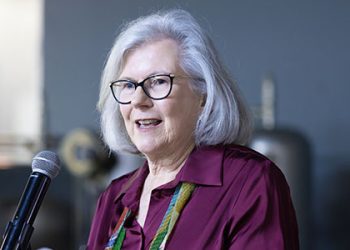The University of Johannesburg (UJ) and the Schneider Electric (SE) – a French multinational company that specialises in digital automation and energy management – have recently partnered to launch the university’s world class 4IR Experience Lab to expose students to a variety of 4IR technologies.
Using cutting-edge technology
Some of these latest technologies include, among others, the use of virtual reality to learn more about mining without leaving one’s room, using cutting-edge technology such as artificial intelligence to explore the intricacies of the human heart in life size. In addition, students are expected to acquire skills such as building 4IR technologies, maintaining them for on-the-job training as well as how to 3D print one’s world and develop robots to demonstrate how programming can make inanimate objects move via coding and enabling the robot to solve a maze.

Cradle of innovation
The university has set itself an ambitious goal of becoming the springboard and cradle of innovation by becoming the first academic institution to adopt of 4IR. The outgone vice-chancellor and principal, Professor Chilidzi Marwala is credited for positioning the university as a model for other universities in South Africa and the continent to embrace and engage in the 4IR conversations. The two organisations first teamed up in 2018 on an outreach project for the impoverished village of Gwakwani in northern Limpopo. The UJ electrical and electronic engineering students within the faculty of engineering and the built environment developed a solar project as an alternative power solution to the villagers.
Impacting society positively
The UJ’s vice-chancellor and principal-designate, Professor Letlhokwa Mpedi reiterated the university’s commitment to fully derive the benefits associated with 4IR technologies such as 3D printed houses and UJ’s newly-launched electric buses. Speaking at the launch of the Lab, Professor Mpedi said: “4IR technologies are the future but they will not help us and the community if they don’t impact society positively. With this partnership we showcase that these technologies can be used to improve lives. With this lab we hope that our students can also learn how to install these and become entrepreneurs and ensure we have a connected country.”
Sustainable frameworks
But, Professor Mpedi said, for these technologies to add value, the approach must be human-centred. “The launch of this lab is important for facilitating the understanding of 4IR technologies in practice. My request is that, as we consume and embrace technology, we do so with humanity in mind. We need to find empowerment in progress and use these tools to build more sustainable frameworks. This, I would argue, is the real future of the 4IR,” he said.
Strategic partnership
Her counterpart, Zanelle Dalglish, SE’s global leader: training & education affairs said their partnership with UJ would enable the youth to access education. “UJ is a strategic partner for us already since 2016 when we established them in our French-South Africa Schneider Electric Education Centred Network. The beauty of our partnership with UJ focuses on the fact that UJ is comprehensive public university, working across levels in the fields of energy. This enables us to showcase the various technologies we have at Schneider Electric, and bringing our technology. This partnership also allows us to bring our technology into academia as well,” said Dalglish.
Exploring the virtual world
Professor Daniel Mashao, dean of the faculty of engineering and the built environment also welcomed the partnership, saying it is important because it brings to life abstract and theoretical aspects of the curriculum offered to students. “This gives students access to what is taking place, what can be done for real [in industry]. Students can also explore the virtual world without being constrained by lectures. It clarifies what 4IR is. It’s the ability to use technology in the virtual world and have it manifest in the real world,” he explained.







